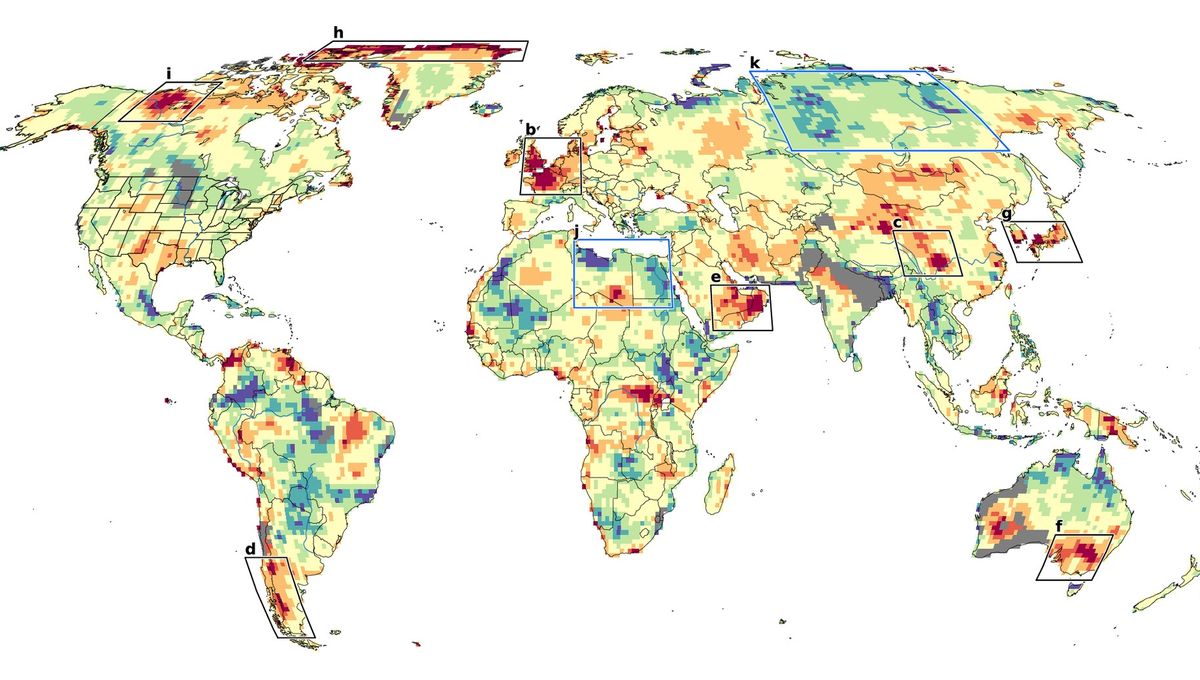
We all know the planet is warming way too fast, and we all know it’s going to have some pretty dire consequences. However, a new study has found that this temperature increase is far from evenly spread, with distinct heat wave “hotspots” experiencing warming far beyond what can be explained by current climate models.
It’s a finding that highlights just how little we know about what we’re doing to the planet – and what the outcomes are going to be.
“This is about extreme trends that are the outcome of physical interactions we might not completely understand,” lead author Kai Kornhuber, an adjunct scientist at the Columbia Climate School’s Lamont-Doherty Earth Observatory and senior research scholar at the International Institute for Applied Systems Analysis in Austria, said in a statement. “These regions become temporary hothouses.”
It’s a familiar story for anybody paying attention to recent climate trends. In 2021, we had the Pacific Northwest sweltering under a heat dome that killed hundreds. In Europe, tens of thousands of people died from heat-related causes in 2022 and 2023; Japan got so hot in 2018 that they had to declare it a natural disaster, and the Arctic got so hot this year that large areas of it just plain burst into flame.
Meanwhile – and perhaps to our detriment – other places have seen much smaller increases in temperature. Unexpectedly small, in fact, according to the new study.
“We quantif[ied] changes of extreme temperatures worldwide over recent decades,” the paper explains, finding “an emergence of hotspots where the hottest temperatures are warming significantly faster than more moderate temperatures.”
“In these regions, trends are largely underestimated in climate model simulations,” it reports. “Globally aggregated, we find that models struggle with both ends of the trend distribution, with positive trends being underestimated most, while moderate trends are well reproduced.”
But it’s what’s behind the discrepancies between projected and actual warming that’s most worrying of all – because so far, we don’t actually know what’s causing it. Some factors have been identified: rising global temperatures will make heatwaves more likely anywhere, and previous work by Kornhuber and his colleagues identified “wobbles” in the jet stream as potential causes of Europe’s 2018 droughts and heat waves.
Similar jet stream disruptions may have been one reason for the Pacific Northwest heatwave in 2021 – compounded by decades of rising temperatures having dried out vegetation to the point of being unable to cope with a spike. That, plus a potentially freak incidence of atmospheric anomalies, pushed the local climate way out of whack in an event “so extreme, it’s tempting to apply the label of a ‘black swan’ event, one that can’t be predicted,” co-author Samuel Bartusek, a Lamont-Doherty graduate student who studied the 2021 heatwave, said.
But “there’s a boundary between the totally unpredictable, the plausible and the totally expected that’s hard to categorize,” he added. “I would call this more of a grey swan.”
Whatever the cause, though, this study makes one thing clear: we’re not prepared for what’s coming. We can’t yet fully predict how bad things are going to get – and we’re in danger as a result.
“Due to their unprecedented nature, these heat waves are usually linked to very severe health impacts, and can be disastrous for agriculture, vegetation and infrastructure,” Kornhuber warned. “We’re not built for them, and we might not be able to adapt fast enough.”
The study is published in the journal PNAS.
Source Link: Unexplained And Deadly Heat Wave Hotspots Are Showing Up Across The Planet